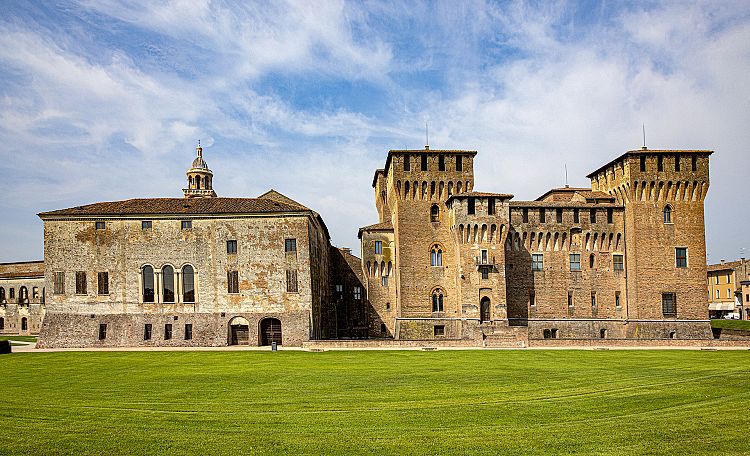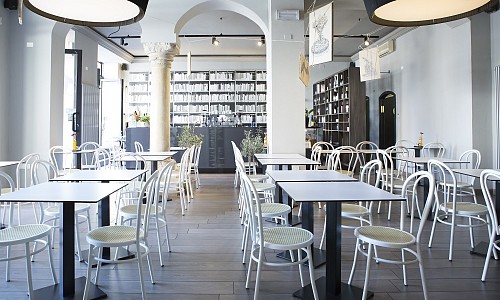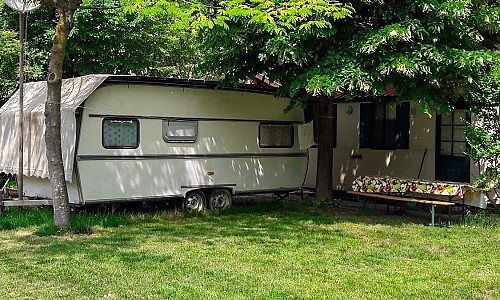Palazzo Ducale: Gonzagas residence, lords of Mantua
- Category What see Lake Garda and Verona
What to see in Palazzo Ducale, home of the Gonzaga family, among Mantegna and Pisanello's works.
Number of views: 4373Agriturismo - Where to stay overnight
- History of the Ducal Palace of Mantua
- Highlights inside the Ducal Palace of Mantua
- Visiting the Ducal Palace of Mantua
History of the Ducal Palace of Mantua
The Ducal Palace is not a single building but a vast complex of more than 500 rooms linked by corridors, loggias and courtyards: for centuries it served as the main residence of the Gonzaga, lords, marquises and finally dukes of Mantua. Under Habsburg rule, Maria Theresa rechristened it the Royal Palace.
The earliest nuclei date to the 13th century, when the Bonacolsi family erected the Palazzo del Capitano and the Magna Domus on what is now Piazza Sordello. From 1328 the Gonzaga expanded and remodelled the site, but it was Duke Guglielmo who in 1557 commissioned prefect of works Giovan Battista Bertani to devise a unified plan. Bertani, and after his death Bernardino Facciotto, fused palaces, courts, hanging gardens and galleries into a continuous organism stretching 500 m from the Lower Lake to Piazza Sordello—about 34,000 m², one of Europe’s largest noble residences.
Today many interiors appear bare: during the 17th–18th centuries the cash‑strapped Gonzaga sold masterpieces—most famously to Charles I of England—while Napoleonic requisitions removed much of what remained. Even so, the palace still offers a journey through Renaissance and Baroque art on an extraordinary scale.
Highlights inside the Ducal Palace of Mantua
Overlooking Piazza Sordello, the Palazzo del Capitano is the oldest wing of the Ducal Palace. Commissioned by Guido Bonacolsi at the end of the 1200s, it was raised one storey in 1300 and joined to the Magna Domus by bridging an alley. The added upper floor forms an immense 1,000 m² hall known as the Armoury or Hall of the Diet, for it hosted the papal diet of 1459.
The Palazzo del Capitano and Magna Domus constitute the core of the so‑called Corte Vecchia. In the mid‑15th century Pisanello began a monumental Arthurian fresco cycle—the Battle of Louverzep—celebrating Gianfrancesco Gonzaga. Rediscovered and restored in the 1960s–70s, the rooms display surviving fragments and their preparatory sinopias, a cornerstone of late‑Gothic art.
Corte Vecchia regained prestige in 1519 when Isabella d’Este left the Castle apartments and installed her widow’s suite here. She relocated the famed Grotta and Studiolo, bringing masterpieces now in the Louvre: Mantegna’s Parnassus and Triumph of Virtue, Perugino’s Battle of Chastity and Love, Lorenzo Costa’s allegories and later Correggio’s Allegories of Vice and Virtue. Other highlights include the “Camera Granda” or Scalcheria, frescoed in 1522 by Lorenzo Leonbruno.
The suite also absorbed rooms in the Santa Croce wing, fashioned from a medieval church: Sala delle Imprese Isabelliane, Imperial Hall, Sala delle Calendule and Sala delle Targhe. Duke Guglielmo Gonzaga (1550‑1587) later added the Refectory overlooking the Hanging Garden and the Hall of Mirrors for court music.
Visiting the Ducal Palace of Mantua
The visitor route spans roughly 3 km of galleries: plan on comfortable shoes and at least two hours. Some rooms, such as the Camera Picta, require advance booking and have limited entry. For current opening times, ticket prices, temporary exhibitions and reservations, see the official site: mantovaducale.beniculturali.it


















